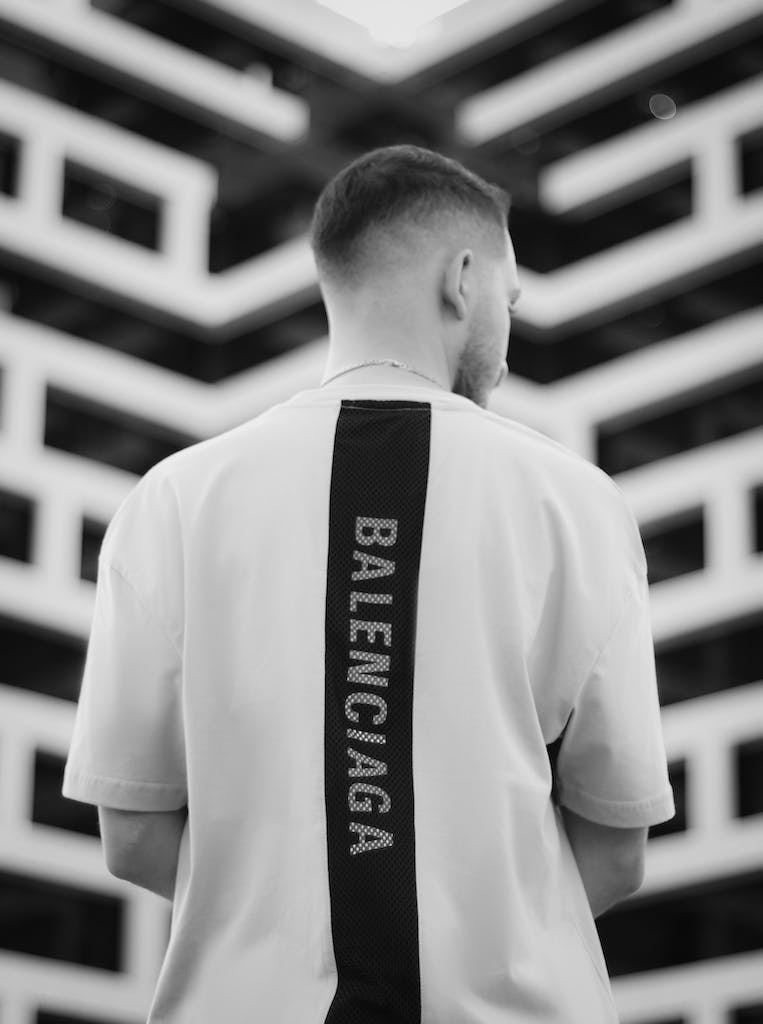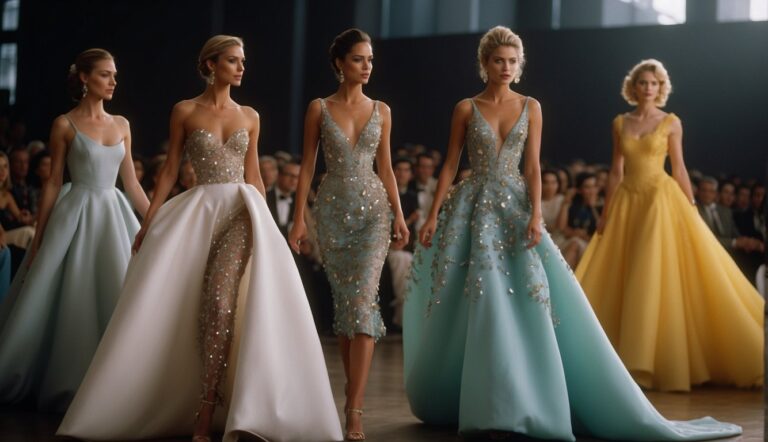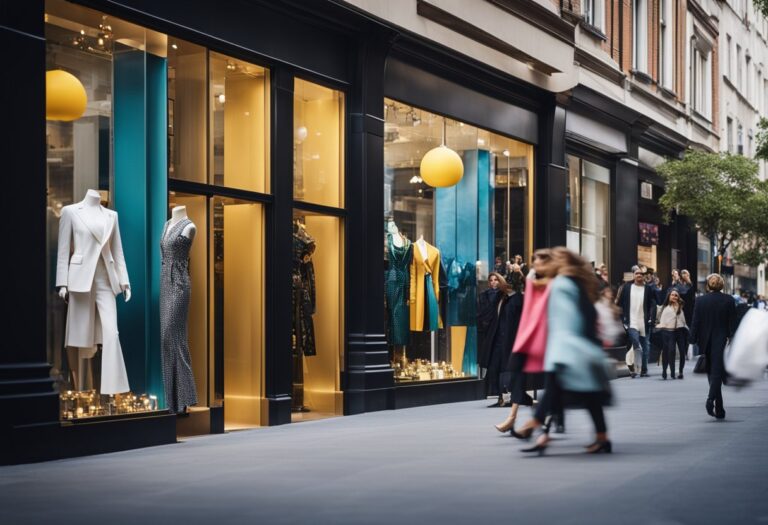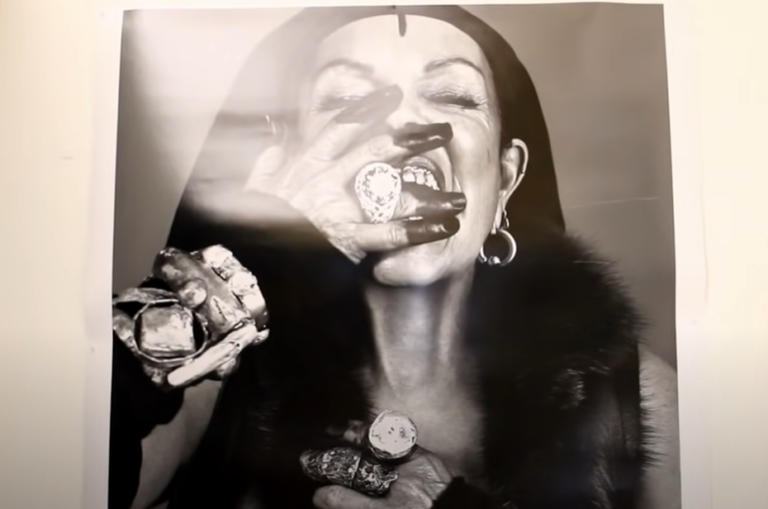Why Are Fashion Shows Filled With Impractical Clothes?
Fashion shows, particularly those in the realm of haute couture, are often filled with impractical clothes primarily as a means for designers to showcase their artistic skills and creativity. These events are less about presenting wearable fashion and more about creating a spectacle that captures media attention and generates significant press coverage.
Designers utilize these shows to demonstrate their mastery over various design techniques, innovative use of materials, and their ability to push the boundaries of conventional fashion. The impracticality of the clothing is part of the allure, making these shows a highlight for media outlets and a talking point for fashion enthusiasts.
This approach ensures that the designer and their brand remain at the forefront of the fashion conversation, driving brand awareness and maintaining a presence in the competitive fashion industry. In this article we’ll further understand the need for such fashion shows even though they seem impractical, they hold a lot of value for the fashion industry.
Why fashion shows are not practical
1. It’s Haute Couture
Impractical fashion shows are predominantly Haute Couture shows. Haute Couture began in response to the demands and preferences of elite buyers and individuals with high social status, who sought exclusive and personalized fashion. This phenomenon began in the mid-19th century, primarily in Paris, which was the fashion capital of the world. The elite and aristocracy desired clothing that was not only unique and luxurious but also a symbol of their status and wealth. This demand for custom-made, high-quality garments led to the birth of haute couture.
This may seem extravagant and impractical to some, but to they serve an unmet need for celebrities, high-flyers and people who attend exclusive events where each person must have a unique piece.
2. Heightens Media Impact and Public Interest
Such extraordinary pieces capture the attention of the media and public alike, often becoming the highlight of fashion coverage. This media attention goes beyond the immediate spectacle, sparking conversations and debates about the limits and possibilities of fashion, thereby keeping the designer and brand in the public eye.
3. Challenges The Creative Directors and Designers
Creative directors in haute couture face significant pressure due to the complex nature of this high-fashion segment. Their role goes beyond mere design; they are tasked with balancing the heritage and creative future of their brand which trickles into their ready-to-wear designs as well. More importantly, they have to navigate the challenging haute couture industry and meet the demanding expectations of an exclusive, high-net-worth clientele. Here are some examples of Haute Couture shows:
- Chanel: Chanel’s creative director Virginie Viard is known for hosting larger than life events like the Fall 2022 show held at an equestrian school in Paris
- Balenciaga: Demna Gvasalia made a notable entry into haute couture with a show that drew significant attention from A-listers. This gets him and the brand into the eyes of fashion press and shareholders of Balenciaga would be happy to keep him as their Creative Director.
4. Marketing For Exclusive Outfits for Red Carpets and Events
The impractical outfits seen on runways are often designed with red carpet events and exclusive gatherings in mind. These events are platforms for celebrities and fashion influencers to showcase their style and often set the tone for fashion trends. Many celebrities and fashion influencers do not own these pieces, they are usually lent to them by the brands to market their brand image.
This is also why many celebrities are invited as VIP guests at fashion shows because they could be potential buyers or potential models for the designs. Designers, therefore, create these unique pieces, knowing they will gain global attention when worn by celebrities at events, thus elevating the brand’s visibility and prestige.
5. For Their VIP Customers
Haute Couture designs are all for sale, but only for the right buyer and prices. They only sell one of each piece and the brand will custom fit the piece to their buyer.
For instance, Christine Chiu, a Taiwanese American business woman and philanthropist, who has bought Haute Couture for close to 15 years said that a brand will measure every inch of you and “everything is custom”. She has her own exclusive seamstress at Chanel who knows that her right arm is a little bit thicker than her left arm and they made her a dress where the arm size is perfectly suited to her body.
The exclusivity and uniqueness of these designs make them appealing to those who want to stand out and are willing to invest in one-of-a-kind fashion statements. This demand from high-profile individuals continues to drive the creation of these extravagant designs.
6. The Artistic Value And Innovation
Haute Couture shows are where fashion transcends its utilitarian roots and becomes a form of art. Designers use these platforms to express their creativity without the constraints of practicality or mass appeal.
When price is not an object there is no ceilings on what they can create and each piece becomes a work of art, telling a story or conveying an emotion, much like a painting or sculpture. This artistic approach allows designers to experiment with new concepts, materials, and techniques, often resulting in the creation of breathtaking, albeit impractical, fashion pieces.
Designers are artists, and runway shows are their galleries, every design is a testament to the designer’s creativity and their ability to transform vision into reality. These pieces might not find their way into the everyday wardrobe, but they push the boundaries of what is considered fashionable, often setting the stage for new trends and influencing the future direction of fashion.
7. Establish Unique Brand Image
In the Haute Couture world, each brand and designer has a unique approach to how they showcase their skills and distinguish themselves. Take Cristobal Balenciaga for example, he created unique clothes that would be considered impractical and became known for transforming the female silhouette.
Valentino as well, under the creative direction of Pierpaolo Piccioli, is known for its bold use of color and romantic designs, making a distinct mark in haute couture.
When a brand becomes known for certain features and flairs they start to “own” these features in the minds of their consumers and people can easily distinguish their clothes even on the street creating a strong brand presence in the fashion industry.
8. Differentiating from Competitors
In the highly competitive world of fashion, having a distinct brand identity is key to success. The more unique and memorable a brand’s runway show, the more it can distinguish itself from competitors. Impractical designs often become the talking points of these shows, helping the brand to carve out a niche for itself and remain at the forefront of fashion discussions.
9. Influences Consumers Preferences
As outlandish as these outfits may be, they significantly shape what consumers look forward to and consider fashionable. Depending on the world’s reactions to these fashion shows designers can further understand what people are looking for.
If there is a certain piece that resonates with the public, elements of these impractical designs are adapted and softened into more wearable forms and could be included in their ready-to-wear fashion shows. Often these high fashion shows trickle down into mainstream fashion and influence the offerings of mid-range and fast-fashion brands.
Overall, fashion shows often feature impractical clothes as they are meant to showcase designers’ creativity and set trends, rather than everyday wearability.






